On Wednesday 19th July, when our Princess cruise ship docked for our port day in Gdansk, I had mixed emotions. I was happy to be back in Gdansk, a place I’d visited a few years earlier with Julie, for a long weekend. But I was also sad because Gdansk was the last port day of our Baltic Cruise.
Well, only one thing for it: make the most of the day.
Something that turned out to be more difficult than anticipated, due to the day’s timings… Our cruise ship would be departing Gdansk at 4 pm. Which meant that we’d need to be back on board no later than 3:30 pm.
To be fair, and to compensate for this, we’d docked at about 7 am. Something that allowed a goodly amount of available time ashore. However, to be even more fair, most of the shops in Gdansk didn’t open until 10 am. And this made getting into Gdansk at, say, 7:30 am a fairly hollow experience. If you can’t get into any of the tourist attractions, buy anything from the shops, or even get a hot drink, it’s going to be very difficult to make the most of the day…!
And this may explain why, when we set off at 9:15 am, so many of the buses for the cruise company excursions were still at the ship.
The most disappointing thing about the time of departure was that it didn’t seem necessary. After all, Following the port day in Gdansk, we had two clear sea days to cruise back to Southampton. There had already been an announcement that the average cruising speed for that journey would be 19.5 knots. And, at various times in the cruise, to that point, we’d been travelling at a couple of knots faster than this. All of which left me questioning, why we couldn’t have left even just an hour later?!
Still, I wasn’t about to let it get me down. It was time to explore Gdnask, baby…!
But, while Gdansk has a rather sizeable port, cruise ships don’t actually dock there. Instead, they make berth at nearby Gdynia. Gdynia is about 14 miles from Gdansk and is linked as a conurbation by Sopot. The three cities are known as Trojmiasto, the Tri-City. And, while it’s fair to say that all three have something to offer, Gdansk is the best place to get your tourist fix. The question then becomes, how best to get to Gdansk, and back, before your cruise ship leaves…?
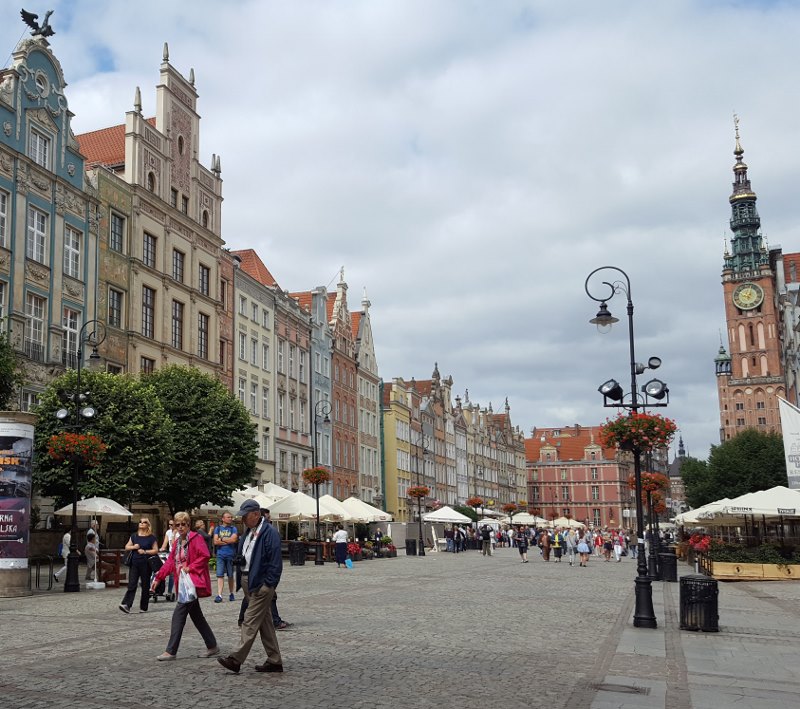
The logical choice, of course, is to utilise one of the cruise company excursions into Gdansk.
The longest, and most expensive, of these was the, ‘Best of Gdansk and Malbork Castle‘. This set off at 7:30 am, returned at 3:30 pm, and cost $109.95 (£89, €98) per adult and $89.95 (£73, €80) per child. There were a couple of other longer day options. These all returned at 3:30 pm but had increasingly later leave times. In addition were a number of much shorter trips that left at various points throughout the day.
But the cheapest cruise excursion, was the one that was closest to what we were after: ‘Gdansk On Your Own’. This set off at 8 am and returned at 3 pm. It was priced at $35.95 (£29, €32) per adult and $25.95 (£21, €23) per child (‘child’ being classified as under 12s). So, what amounted to a bus journey to and from Gdansk, with a tourist map thrown in, would have cost us $143.80 (£116, €128).
I think not!
In trying to work out the alternative ways into Gdansk, that day’s newsletter, the Princess Patter, actually included some useful information! It informed us that taxis would be waiting and would charge us €10 to take us to Gdynia train station or €80 for the drive to Gdansk. We were also told that, “The train station is just under 3 km walk away from the pier.”
To address this last point first, Gdansk/Sopot/Gdynia is a conurbation. As such, there are a number of train stations all along the line. There are 9 in Gdansk, 3 in Sopot and 9 in Gdynia. The nearest station to the pier is the Gdynia Glowna station, which is a 2.4 km (1½ mile) walk away. It took us about 30 minutes to walk from the station to the cruise ship, on the way back.
As for the taxis, they were, indeed, waiting and did, indeed, offer the quoted rates. Exactly the quoted rates!
They also offered tours of their own, promising to stay with us the whole day and take in all the best highlights of all three cities. The quoted price for this was €150. And, as we were travelling as a group of six for the day, this worked out at €25 per person. A rate that was comfortably cheaper than the cruise’s equivalent. And, although tempted, we declined and walked the couple of hundred meters to the exit of the port.
Just before the port exit, there was a sign that displayed the ‘Estimated Taxi Rates’ of the drivers that lay beyond:
- Gdynia Centre: 15PLN – €3.5
- Sopot Centre: 35PLN – €8
- Gdansk Old Town: 100PLN – €23
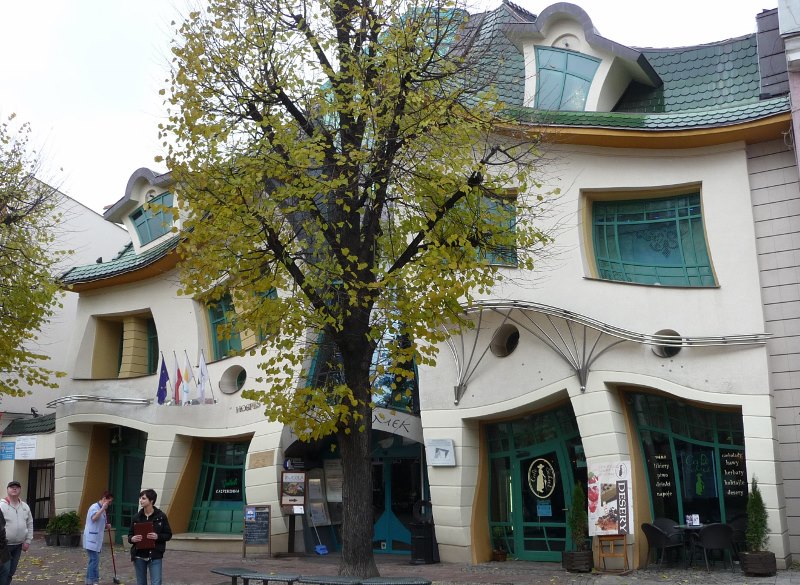
And, just outside the barriers to the port was a waiting scrum of taxi drivers…
They were fully aware of the prices on the sign and all immediately started disputing them, in various ways. One of the most common arguements was that the sign meant, the price per person.
Personally, I didn’t put much stock in the prices on the sign. To my mind, it could be considered an attempt to discredit the taxis on the outside of the port. For the purpose of trying to encourage you to use the taxis inside the port. The sign creates an unrealistic expectation, which makes you immediately feel that those taxi drivers are trying to rip you off. So you go back to the port-approved taxis, on principle. Except, of course, the port-approved taxis are paying the port to be there.
Well, anyway, that was my thought. Which is why we decided to hear what these external taxi drivers had to say.
The first thing we were offered was the same dedicated day tour, as offered in the port, but for only €100. This was a saving of €50 for a 200 meter walk. We declined and asked for the cost of a trip to Gdansk Old Town and were offered €60. Again we declined and said we’d take the train. At which point we were offered €50. As there were 6 of us, this worked out at €8.33 each. Much cheaper than anything the cruise company had to offer. And, as it was a relatively short shore day, we took it.
The drive took about 35 minutes and we were dropped off beside the river-side tourist attraction, known as The Crane. The driver even gave us a photocopy of a ‘Baltic Gateway’ street map. This was a nice thought, but not much use as a map. The driver then suggested that we arrange a time with him to be collected. If we hadn’t been planning to take the train back, this would have been a good idea. As it was, we thanked the driver and declined.
A general note, at this point, is that the taxi drivers, as a group, didn’t speak much English. They did, however, have excellent German, should that be in your skill set.
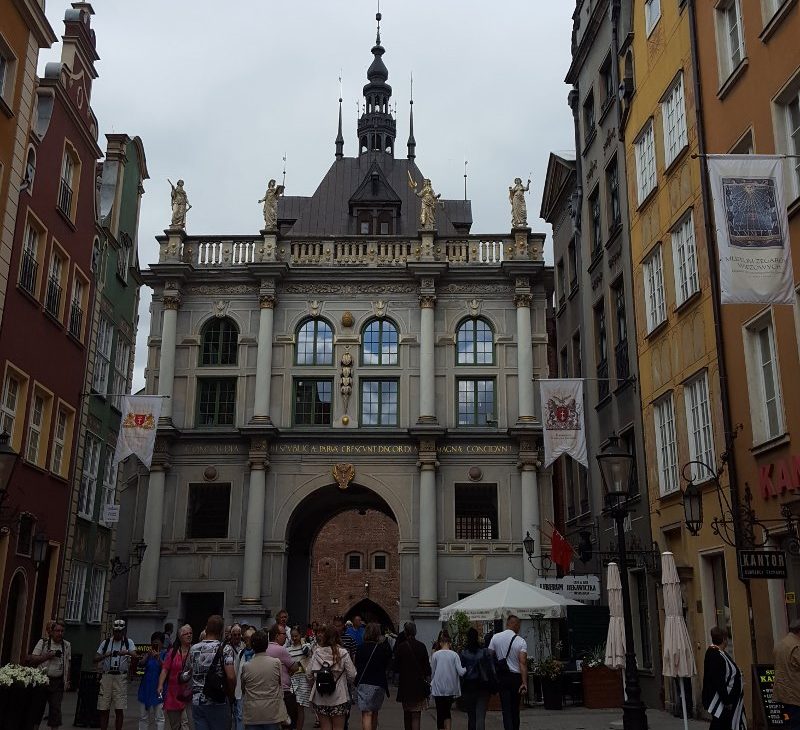
If, on your journey from the cruise ship to Gdansk, you want to avoid taxis altogether, there are a couple of good options available, with the buses and trains.
There is a bus stop just outside the port, Gdynia – Srodmiiescie. In the bus shelter was a timetable for routes 119, 133, 137, 147, 700 and 160. There was also a map of all the local public transport networks, with QR code links to their parent sites. There doesn’t seem much point in trying to go into detail about what buses take you where, and when, in this post. After all, these timetables change on a regular basis…
At least, that’s my story and I’m sticking to it. It’s certainly not because I couldn’t work the map out…!
Anyway, my point is that there are lots of buses. One of which will certainly take you to your preferred train station. There’s also, very likely, one that you can ride all the way to Gdansk Old Town. And, judging by the price of the train tickets, these buses would be remarkably cheap. Furthermore, by the time you factor in your walk to the train station, the bus option would be roughly the same journey duration as a train trip.
If, however, you do decide to walk to the station, there are signs along the footpath leading away from the pier, that point you in the right direction for the city centre.
In terms of the costs of the train, here I can be more specific, as we caught the train back the other way. The journey from Gdansk Glowny to Gdynia Glowna was 6.5 zloty per person. On the day of travel, this translated to £1.38 ($1.71, €1.53) each. I can see no reason why the trip the other way should cost any differently. Return tickets may work out to be more cost effective still.
The train journey back from Gdansk took less than 30 minutes, which was slightly shorter than the taxi ride in. However, the walk back from the station added another 30 minutes, meaning that the total journey back took an hour. Frankly, though, if I was doing it again, I’d take the train both ways just because it seems criminal not to travel by train when the prices are that low.
Anyway, however you get there, once you’re in Gdansk Old Town, you don’t need any transport to move around. There’s plenty to see in a nice, small area. Don’t get me wrong, there are plenty of other places you could visit, away from the Old Town, but the time constraints of the day make doing so a tricky endeavour.
If you do wish to explore further afield, there is a Hop on Hop off bus service. There are also river trips available, as well as water taxis. Should your plan involve exploring beyond the old Town, you’re probably best off visiting a Tourist Information Centre for details. You can also get yourself a map, from one of these Centres, if you’re exploring by foot. Fortunately, there is a selection of Tourist Information Centres to chose from:
- Opposite the Ggdansk Glowny train station, if you come by train.
- At the river end of Dlugi Targ (the main street), by The Green Gate, if you come in by taxi.
- By the Amber Museum, at the other end of Dlugi Targ, and not far from The Golden Gate, should you arrive by bus.
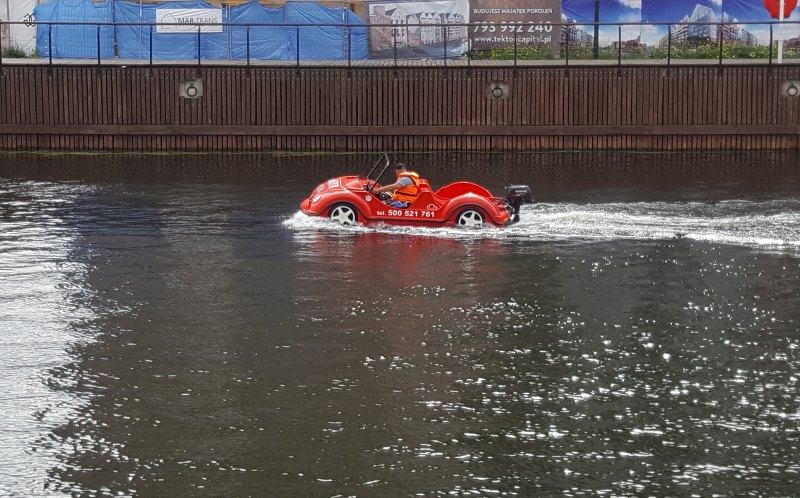
The area between the Green Gate and the Golden Gate holds a great deal to see in a quite tiny area and, as a result, gets extremely busy as the day gets older. My advice is to get there early, take your time exploring it and then stay away after 11:30 am because it’ll be swarming. From my previous visit to Gdansk, I can tell you that the area quietens down again later in the afternoon. But that’s no real help when you have to be back onboard your cruise ship by 3:30 pm.
If you like Amber, there are great many shops and stalls along the Motlawa River between the Green Gate and the Crane and, also, along the the street, Swietego Ducha. My elder daughter was looking for an amber ring, so we visited a quite a few of the stalls. The price varied significantly, shop to shop, so it seems likely that there are bargains to be had. That said, with the price varying that much, it seems logical that the quality would do likewise. However, to my untutored eyes, all the rings I looked at with my daughter seemed very nice.
In the end, though, she didn’t buy one. Because, of course she didn’t!
One thing that you should be mindful of is, what I thought of as, ‘fake amber’. This was amber that contained modern insects, like wasps. Also, things like lizards. You’ll know it, when you see it, because the the amber is flawless, the animals contained within are pristine, and the price is suspiciously low. Or, at least, low compared to the tiny pieces of beat-up amber, with half a mosquito in it, locked up in the cabinets by the sales desk…
It is likely that what I am describing is not ‘fake amber, per se. It might very well be Amberoid, or pressed amber. Amberoid is made by heating up small fragments of amber until they’re soft, and then pressing these bits into a new shape. With, maybe, a wasp in the middle of said new shape. Technically, Amberoid is still amber. It can certainly retain all the expected characteristics of amber. It is not, however, an authentic fossil. That wasp, for example, was not dodging dinosaurs, 200 million years ago.
It was trying to avoid getting swatted, two months ago…!
And there’s absolutely nothing wrong with Amberoid. It’s certainly a much cheaper way of getting a decent sized chunk of amber with an amazing centerpiece. Just so long as you’re aware that it’s a modern composite, and not an ancient treasure.
But, enough about jewelry; let’s get on to the important stuff:
Another thing that was plentiful in Gdansk was the bakeries. And, to my mind, any city is automatically a better place when it has a lot of bakeries. The baked goods were many and varied and, of the ones I tried, delicious. What these bakeries offered also ranged from, ‘subtle variations on a theme’ to, ‘completely different’… At least, compared to the other countries that I’ve visited.
It seems that the Polish have developed their own range of baked goods, away from the prying eyes of the French (those self-declared masters of baking), and done a very fine job of it. I wish I’d had time to investigate more. In fact food, in general, was both prominent and excellent all around the city. The open produce markets had some of the biggest and finest fruit and veg I’ve ever seen. I fully intend to spend more time investigating the Polish supermarkets in my home town, when we get back.
If you’re interested in the local foods, or the local clothing, there’s the Hala Targowa (Market Hall). It is situated on Plac Dominikański, has three floors of market stalls, and is really worth a look. And this is particularly the case, if you like history, because the ground floor has been built to show off the 12th century ruins that lie beneath.
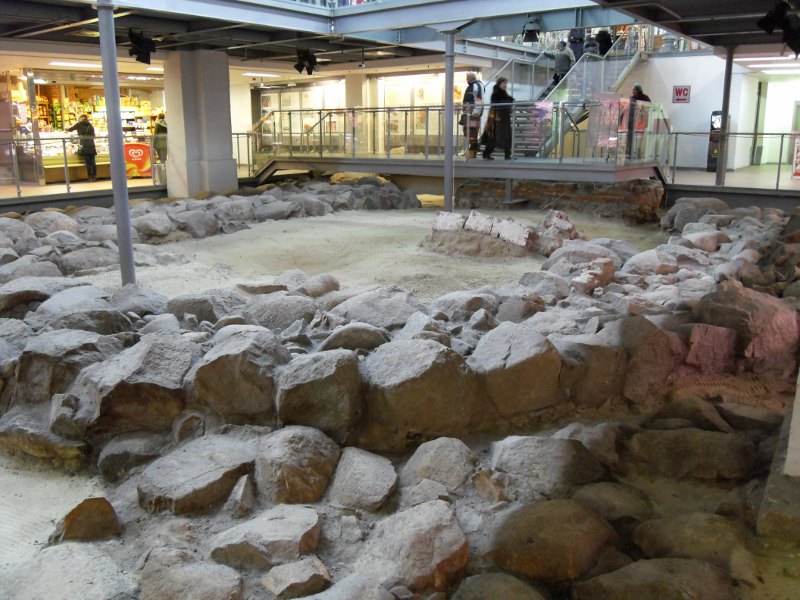
By Artur Andrzej – Own work, CC0, https://commons.wikimedia.org/w/index.php?curid=15610036
For our part, we simply wandered up and down the streets between the Motlawa river and the Waly Jagiellonskie (main road), taking in the sights as they presented themselves to us. All the shop keepers spoke good English, as did the serving staff at the restaurant where we stopped at for lunch. Everyone we spoke to was helpful and friendly. And this included the poor lady I accosted on the platform of the station, to ask whether we were about to get on the right train. She said she thought we were… She was right.
And the reason for the confusion about the trains, is that there are two services operating from Gdansk Glowny train station. There is the PKP and the SKM. And, you could only get to Gdynia, on the local train service, which was the SKM.
And, to get to the ticket office for the SKM, you don’t actually go into the very impressive looking train station. Instead, if you’re at the train station, you go down the stairs to the underpass. You can’t miss the stairs, the entrance is just in front of the KFC.
If, however, you’re coming from the Old Town, just plan your route to go past go St. Joseph’s Church and then St. Elisabeth’s Church. This will naturally bring you to the underpass you need. St. Elisabeth’s Church might not be on your map, or it might be labelled, Kościół Rzymskokatolicki pw. św. Elżbiety… But the church is situated on the road called Elzbietanska, and that should be on your map.
Anyway, whichever way you get to the underpass, the ticket office is to the right of the stairs that lead up to the main building of the station. Once you’ve got your tickets, you need to validate them before you get on the train. To do this, use the machines at the foot of the stairs that lead to your platform. All you have to do is insert the ticket into the slot, as indicated by the arrow. If in doubt, just hang around for a few seconds and copy what the locals are doing.
Just a quick mention about the ‘Visit Gdansk’ map provided by the Tourist Information Office. You’ll need to fold it, but it’s brilliant. I know I shouldn’t feel this excited about a map but I can’t help it. The main part of the map focuses solely on the things that you, as a tourist, want to see; each site with it’s own number. The reverse side identifies each number in four languages. There is also a smaller part to the map that tells you where the public toilets are located. Something that is particularly useful for cruise passengers, with nowhere else to go…
The Old Town of Gdansk is very picturesque. These streets are lined with the tall, narrow, colourful buildings and are a sight to behold. Gdansk also has a very fine line in churches and cathedrals, due to the city’s immense history as well as its significance, geographically.

Historically, Gdansk has been a very important place for a very long time and has become extremely wealthy as a result. It is also, arguably, the place to come if you want to buy amber on your Baltic cruise. I’ve no doubt that Sopot has its own story to tell. Likewise, I’m sure you could fill your day in Gdynia. But, if your cruise ship docks here, you really should see Gdansk.
My one criticism of Gdansk, ironically, is the number of tourists. It is such a good place to visit that so many of us do. This makes the area between the Green Gate and the Golden Gate uncomfortably cramped for a lot of the time. But, with a bit of planning, even this doesn’t matter.
And, despite us damn tourists cluttering up the place, and the restricted timescale, I really enjoyed our visit to Gdansk by cruise ship.

1 thought on “Visiting Gdansk by Cruise Ship”
a very impressive report and will make my trip there much easier, many thanks